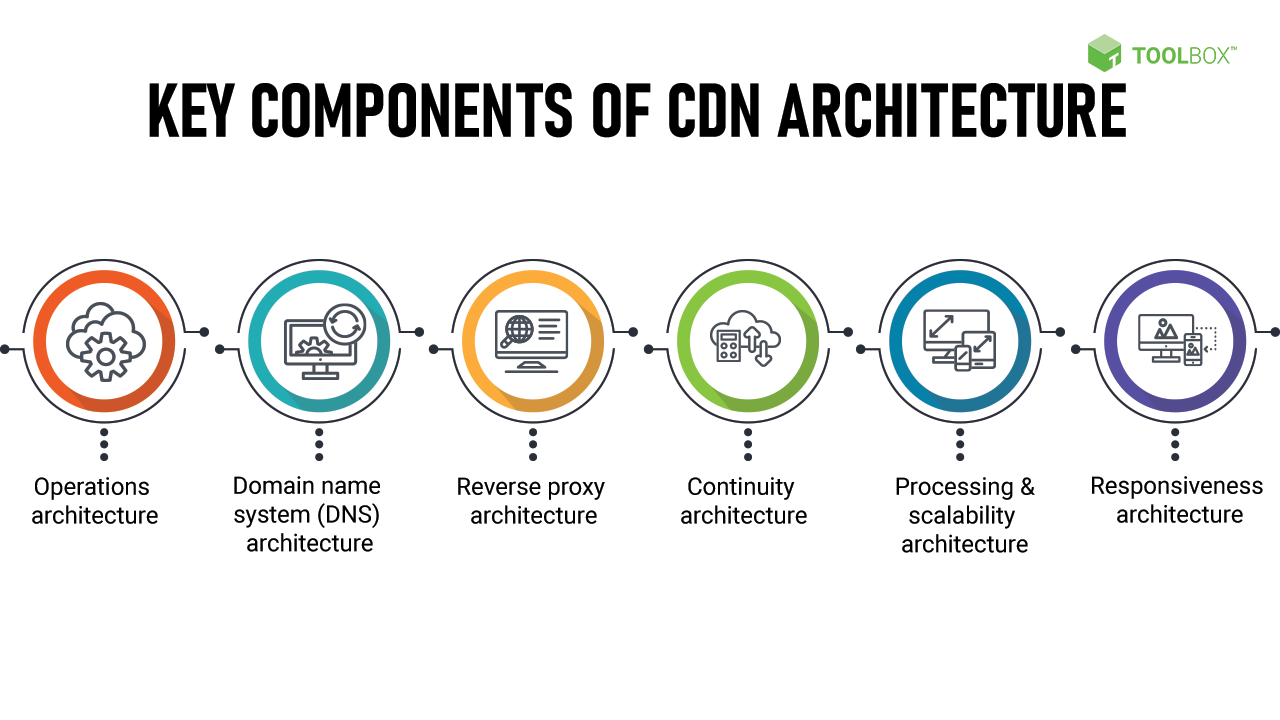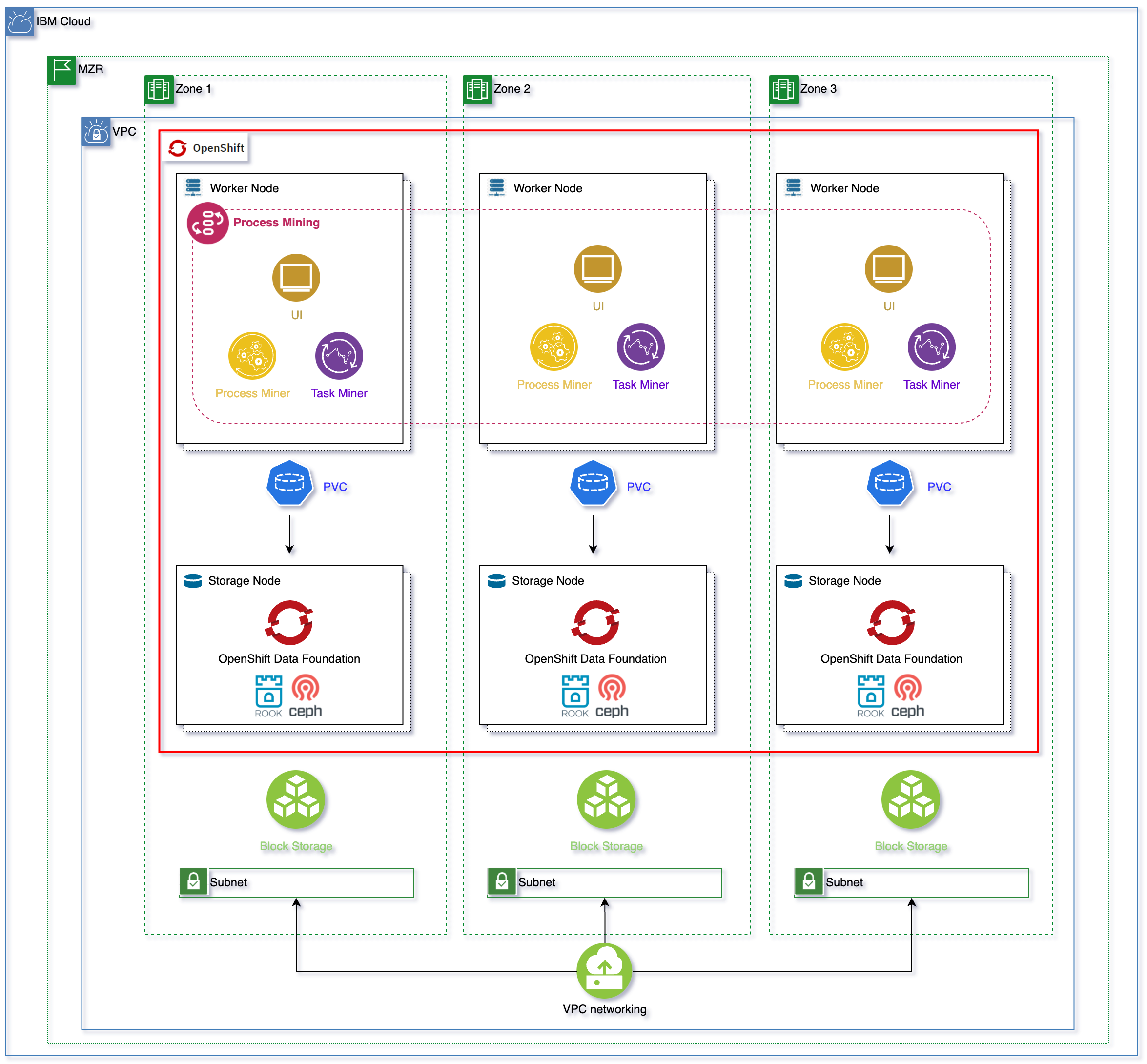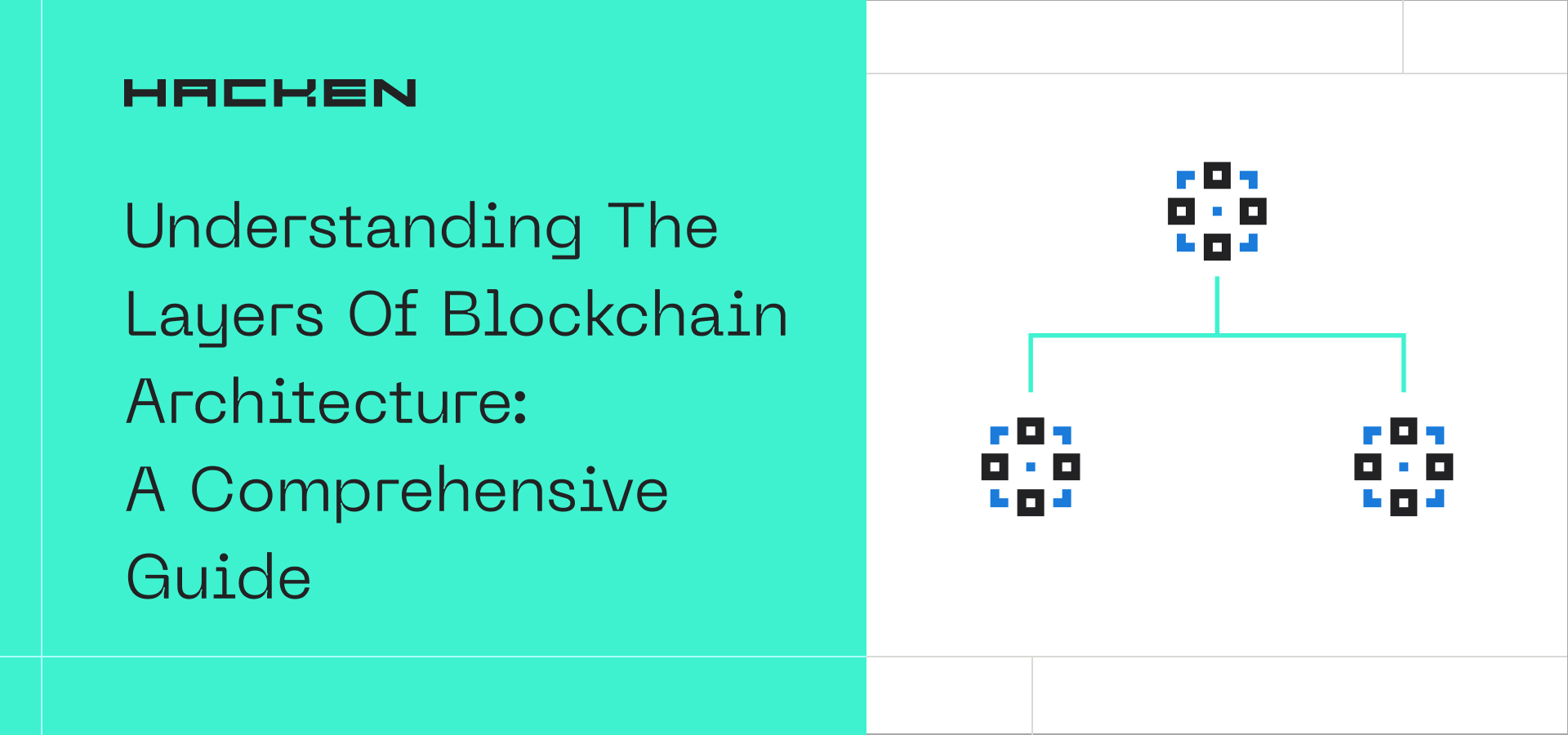Private Cloud Architecture: A Comprehensive Guide to Building an Efficient and Secure Cloud Infrastructure
Private cloud architecture has emerged as a game-changer in the world of enterprise computing. With its ability to offer enhanced security, flexibility, and control over data, private cloud solutions are becoming increasingly popular among businesses. In this comprehensive guide, we will delve into the intricacies of private cloud architecture, exploring its benefits, key components, and best practices for implementation.
Understanding Private Cloud Architecture
Defining Private Cloud Architecture
Private cloud architecture refers to a cloud computing model that is dedicated to a single organization. Unlike public clouds that are shared among multiple users, private clouds offer exclusive access to a specific organization. This ensures heightened security and greater control over data and resources. Private cloud architecture combines the scalability and flexibility of cloud computing with the privacy and customization of on-premises infrastructure.
Differences from Public and Hybrid Clouds
Private cloud architecture differs from public and hybrid cloud models in several key ways. Public clouds, such as those offered by major cloud service providers, are accessible to the general public and are shared among multiple organizations. Hybrid clouds, on the other hand, combine the features of private and public clouds, allowing organizations to leverage both private infrastructure and public cloud services. Private clouds offer organizations complete control over their data and infrastructure, ensuring heightened security and compliance.
Advantages of Private Cloud Architecture
There are several advantages to adopting private cloud architecture:
- Enhanced Security: Private clouds offer a higher level of security compared to public clouds. Organizations can implement strict access controls, encryption, and other security measures to protect their sensitive data.
- Greater Control: With a private cloud, organizations have complete control over their infrastructure, allowing them to customize it to suit their specific needs. This level of control enables better resource allocation and optimization.
- Improved Performance: Private clouds provide dedicated resources, ensuring consistent and reliable performance. This is particularly beneficial for organizations with high-performance computing requirements.
- Compliance and Regulatory Compliance: Private clouds enable organizations to meet industry-specific compliance requirements and data protection regulations more easily.
- Scalability: Private clouds offer scalability, allowing organizations to expand their resources as needed without relying on external providers.
Key Components of Private Cloud Architecture
Hardware
The hardware component of private cloud architecture forms the foundation of the infrastructure. It includes servers, storage devices, networking equipment, and other physical components required to host and manage the cloud environment. Organizations can choose between on-premises hardware or opt for a hosted private cloud solution offered by a third-party provider.
Virtualization Technologies
Virtualization technologies play a crucial role in private cloud architecture. They enable the creation of virtual instances or machines that run on physical hardware. By virtualizing computing resources, organizations can achieve better resource utilization, scalability, and flexibility. Popular virtualization technologies include VMware, Hyper-V, and KVM (Kernel-based Virtual Machine).
Networking Infrastructure
Networking infrastructure is a critical component of private cloud architecture. It includes routers, switches, firewalls, and load balancers that facilitate communication between various components of the cloud. Organizations can leverage software-defined networking (SDN) to create virtual networks and improve network management and security.
Storage Solutions
Private cloud architecture requires robust and scalable storage solutions. Organizations can choose between traditional storage options such as network-attached storage (NAS) or storage area networks (SAN), or adopt newer technologies like software-defined storage (SDS) and object-based storage. These options provide organizations with the flexibility and scalability needed to meet their data storage requirements.
Designing a Secure Private Cloud
Importance of Security in Private Cloud Architecture
Security is a primary concern when designing a private cloud architecture. Organizations must protect their data, applications, and infrastructure from unauthorized access, cyber threats, and data breaches. A comprehensive security strategy includes various measures such as encryption, access controls, intrusion detection systems, and regular security audits.
Implementing Robust Access Controls
Access controls are crucial in ensuring the security of a private cloud. Organizations should implement granular access control mechanisms that restrict access to sensitive resources based on user roles and permissions. This prevents unauthorized users from accessing critical data and applications.
Encryption for Data Protection
Encryption is essential for protecting data in transit and at rest within a private cloud environment. Organizations should implement strong encryption algorithms and ensure that data is encrypted before it leaves the client’s premises. This ensures that even if the data is intercepted, it remains unreadable and secure.
Threat Detection and Incident Response
Threat detection systems are vital for identifying and mitigating potential security threats in a private cloud. Intrusion detection and prevention systems (IDS/IPS) can monitor network traffic and detect any suspicious activities. Incident response plans should also be in place to ensure a swift and effective response in the event of a security breach.
Scalability and Elasticity in Private Cloud
Understanding Scalability and Elasticity
Scalability and elasticity are critical features of private cloud architecture that enable organizations to meet changing demands and optimize resource utilization. Scalability refers to the ability to expand or contract resources based on demand, while elasticity refers to the automatic allocation and deallocation of resources in response to dynamically changing workloads.
Auto-Scaling for Dynamic Resource Allocation
Auto-scaling allows organizations to automatically adjust resource allocation based on predefined parameters and thresholds. By monitoring workload patterns and performance metrics, organizations can ensure optimal resource utilization and prevent overprovisioning or underprovisioning of resources.
Load Balancing for Efficient Resource Distribution
Load balancing is a technique used to distribute workloads evenly across multiple resources in a private cloud environment. It ensures that no individual resource is overwhelmed while others remain underutilized. Load balancing can be achieved through various methods, such as round-robin, least connections, or dynamic load balancing algorithms.
Resource Management and Optimization
Effective resource management is crucial for achieving scalability and elasticity in a private cloud architecture. Organizations should implement resource management tools and techniques that allow them to monitor resource usage, identify bottlenecks, and optimize resource allocation. This ensures efficient utilization of resources and prevents wastage.
Private Cloud Networking
Virtual Private Networks (VPNs) for Secure Communication
Virtual private networks (VPNs) allow organizations to establish secure connections over public networks, such as the internet. Private cloud architecture can leverage VPN technology to create secure tunnels for communication between on-premises infrastructure and the private cloud. This ensures the confidentiality and integrity of data transmitted over the network.
Software-Defined Networking (SDN) for Network Flexibility
Software-defined networking (SDN) is a network architecture that separates the control plane from the data plane, allowing for centralized network management and greater flexibility. In a private cloud environment, SDN enables organizations to create virtual networks, define network policies, and dynamically allocate network resources as needed.
Network Virtualization for Increased Efficiency
Network virtualization is a technique that allows multiple virtual networks to coexist on a single physical network infrastructure. By abstracting the underlying network hardware, organizations can achieve greater efficiency and flexibility in managing their private cloud networks. Network virtualization also enables organizations to segment their networks for enhanced security and isolation.
Automation and Orchestration in Private Cloud
Understanding Automation and Orchestration
Automation and orchestration are essential for streamlining operations and optimizing resource utilization in a private cloud environment. Automation involves the use of tools and scripts to automate routine tasks, such as provisioning virtual machines or deploying applications. Orchestration refers to the coordination and management of these automated tasks to achieve specific outcomes.
Automating Provisioning and Configuration
Automated provisioning and configuration enable organizations to rapidly deploy virtual machines and configure them according to predefined templates and policies. This eliminates manual intervention and reduces the time required for resource provisioning, ensuring faster service delivery and improved efficiency.
Managing Workflows and Service Delivery
Orchestration tools allow organizations to define and manage workflows that encompass multiple automated tasks. This enables the seamless coordination of different processes and ensures the efficient delivery of services within the private cloud environment. Organizations can leverage workflow management tools and service catalogues to streamline service delivery and enhance user experience.
Monitoring and Reporting
Monitoring and reporting are crucial aspects of automation and orchestration in a private cloud architecture. Organizations should implement monitoring tools that provide real-time visibility into the performance and health of their cloud infrastructure. Automated reports and dashboards help identify bottlenecks, track resource utilization, and optimize workflows for improved efficiency.
Private Cloud Monitoring and Management
Importance of Monitoring in Private Cloud
Monitoring is essential for ensuring the smooth functioning of a private cloud infrastructure. It allows organizations to proactively identify and address performance issues, bottlenecks, and potential failuresthat could impact the availability and performance of their cloud services. Effective monitoring and management practices help organizations optimize resource allocation, troubleshoot issues, and plan for future capacity requirements.
Performance Monitoring and Optimization
Performance monitoring involves tracking and analyzing key performance metrics to ensure optimal resource utilization and responsiveness of the private cloud infrastructure. Organizations can leverage monitoring tools to collect data on CPU usage, memory utilization, network throughput, and storage performance. This information helps identify areas of improvement and optimize resource allocation for better performance.
Capacity Planning and Resource Allocation
Capacity planning is the process of forecasting future resource requirements based on historical data and projected growth. By analyzing resource utilization trends and business demands, organizations can accurately allocate resources to meet current and future needs. This proactive approach helps prevent resource shortages, bottlenecks, and performance degradation.
Automated Alerting and Incident Management
Automated alerting systems play a crucial role in private cloud monitoring. Organizations can configure thresholds and triggers to generate alerts when predefined conditions are met or exceeded. This allows IT teams to proactively respond to issues and minimize downtime. Incident management processes should be in place to ensure timely resolution of incidents and minimize the impact on cloud services.
Disaster Recovery and Business Continuity in Private Cloud
Importance of Disaster Recovery and Business Continuity
Disaster recovery and business continuity planning are critical considerations for any organization, including those leveraging private cloud architecture. These measures ensure the availability, integrity, and recoverability of data and services in the event of a catastrophic event or system failure.
Backup and Replication Techniques
Backup and replication techniques are fundamental components of a disaster recovery strategy. Organizations should implement regular backups of critical data and replicate it to an off-site location. This ensures that data can be restored in the event of hardware failures, natural disasters, or other unforeseen events.
Failover Mechanisms for High Availability
Failover mechanisms are essential for achieving high availability in a private cloud environment. Organizations can implement technologies such as virtual machine migration, load balancing, and redundant infrastructure to ensure seamless failover and minimal downtime. Failover mechanisms automatically redirect traffic and workload to standby resources in the event of a failure.
Disaster Recovery Planning and Testing
Organizations should develop comprehensive disaster recovery plans that outline procedures, roles, and responsibilities in the event of a disaster. These plans should be regularly tested to validate their effectiveness and identify areas for improvement. Regular testing ensures that personnel are trained and prepared to execute the recovery plan when needed.
Compliance and Regulatory Considerations
Data Privacy and Protection
Compliance with data privacy regulations is crucial for organizations operating in a private cloud environment. It is essential to ensure that sensitive data is adequately protected and that appropriate security measures are in place to prevent unauthorized access or disclosure. Organizations should implement encryption, access controls, and data classification policies to maintain compliance with privacy regulations.
Data Residency and Sovereignty
Data residency and sovereignty regulations dictate that certain types of data must remain within specific geographical boundaries. Organizations must ensure that their private cloud architecture complies with these regulations by implementing data localization measures and selecting data centers in compliant jurisdictions.
Compliance Audits and Reporting
Regular compliance audits are necessary to ensure adherence to industry-specific regulations and standards. Organizations should establish processes to monitor and report on compliance-related activities, including documentation, access controls, and security measures. Compliance audits help identify gaps and enable organizations to address any non-compliance issues promptly.
Best Practices for Private Cloud Implementation
Initial Planning and Assessment
Prior to implementing a private cloud architecture, organizations should conduct a thorough assessment of their requirements, existing infrastructure, and business objectives. This includes evaluating the feasibility, cost, and benefits of transitioning to a private cloud model. A comprehensive plan should be developed, outlining the goals, timeline, and resource allocation for the implementation process.
Designing for Scalability and Flexibility
Scalability and flexibility are essential considerations when designing a private cloud architecture. Organizations should adopt a modular approach that allows for seamless scalability as demand increases. This includes designing the infrastructure to accommodate future growth, implementing automation and orchestration tools, and leveraging virtualization technologies to maximize resource utilization and agility.
Ensuring Security and Compliance
Security and compliance should be at the forefront of any private cloud implementation. Organizations should implement robust security measures, including encryption, access controls, and threat detection systems, to protect sensitive data. Compliance with industry-specific regulations should be ensured throughout the design and implementation process.
Regular Monitoring and Performance Optimization
Private cloud architectures require regular monitoring and performance optimization to ensure optimal resource utilization and responsiveness. Organizations should establish monitoring processes, leverage performance monitoring tools, and regularly analyze data to identify bottlenecks and areas for improvement. Continuous optimization helps maintain high performance levels and prevents resource wastage.
Ongoing Training and Skill Development
Private cloud implementation requires skilled professionals who can effectively manage the architecture and its components. Organizations should invest in ongoing training and skill development programs to ensure that IT teams are equipped with the knowledge and expertise required to operate and maintain the private cloud infrastructure. This includes staying updated on the latest technologies, best practices, and industry trends.
Private cloud architecture offers organizations a powerful and flexible solution for managing their computing needs. By leveraging the benefits of enhanced security, scalability, and control over data, businesses can streamline their operations and achieve greater efficiency. However, building a private cloud infrastructure requires careful planning, implementation, and ongoing management. With the insights provided in this comprehensive guide, you now have the knowledge and tools to design and deploy a private cloud architecture that meets your organization’s unique requirements. Embrace the potential of private cloud and unlock new possibilities for your business.
Remember, the success of your private cloud implementation lies in understanding the key components, security considerations, scalability techniques, and best practices. Stay informed about the latest advancements in private cloud architecture and adapt your infrastructure to meet the evolving needs of your business. By doing so, you can ensure a robust and future-proof private cloud environment that drives innovation and empowers your organization.









